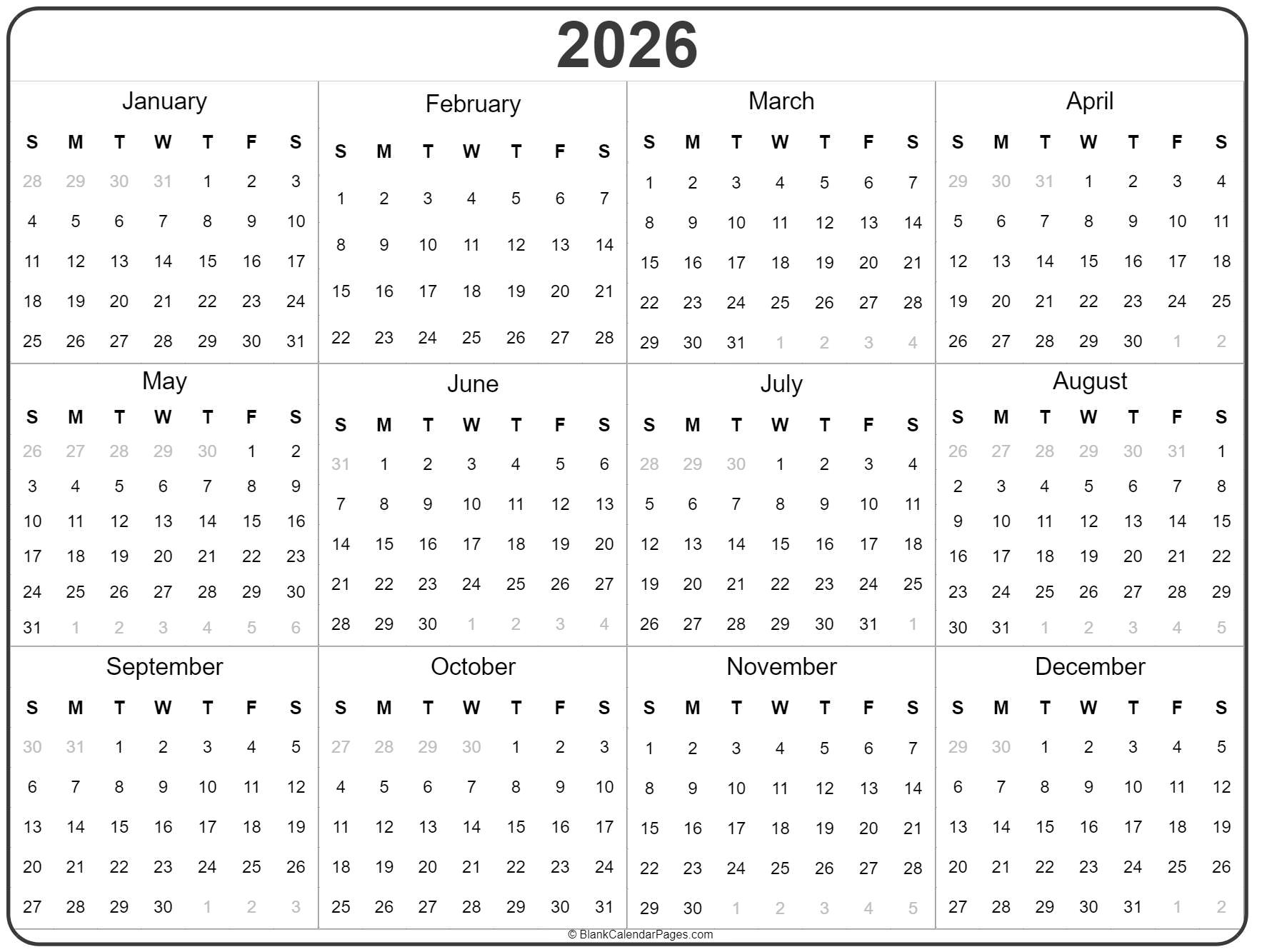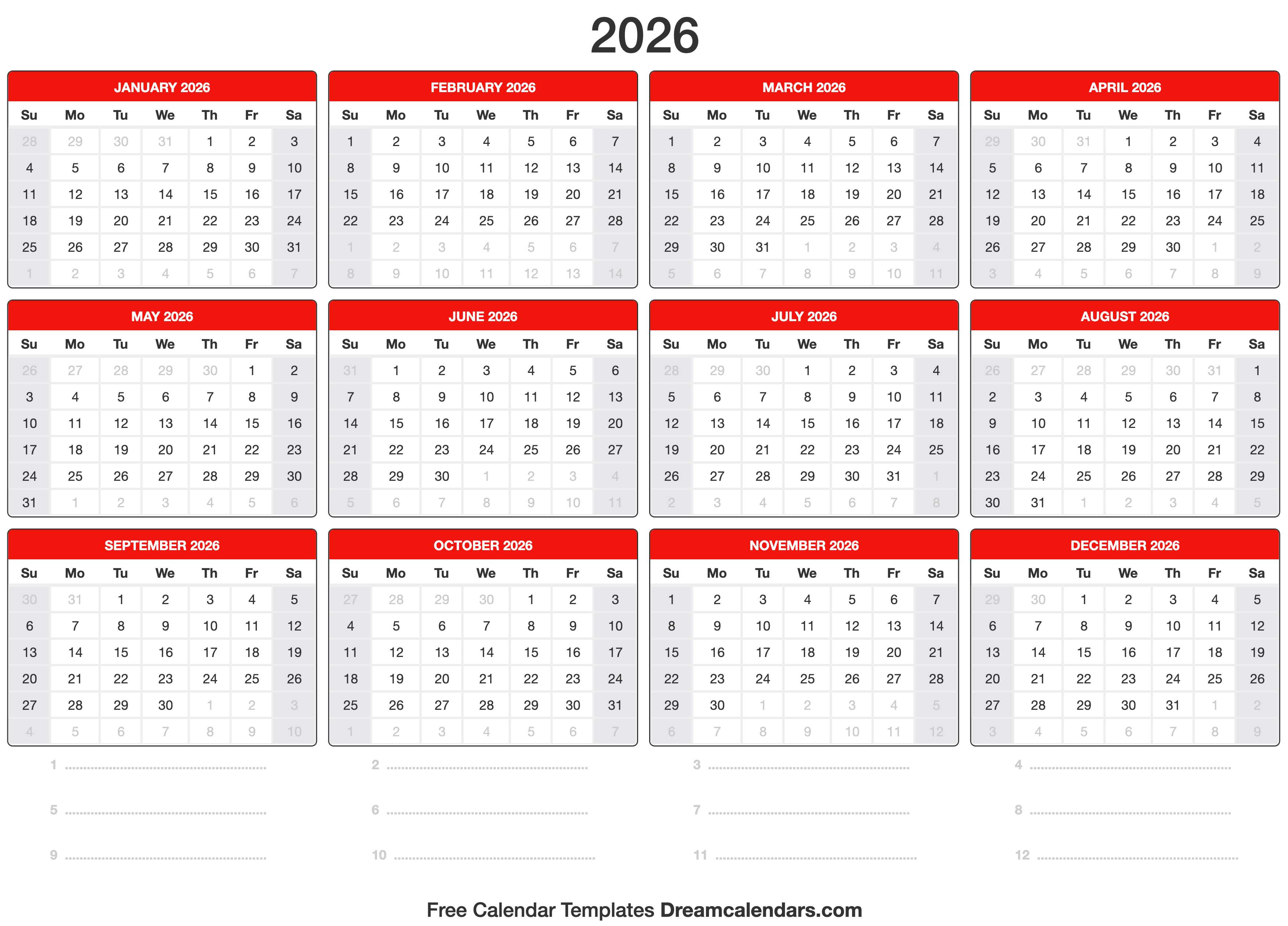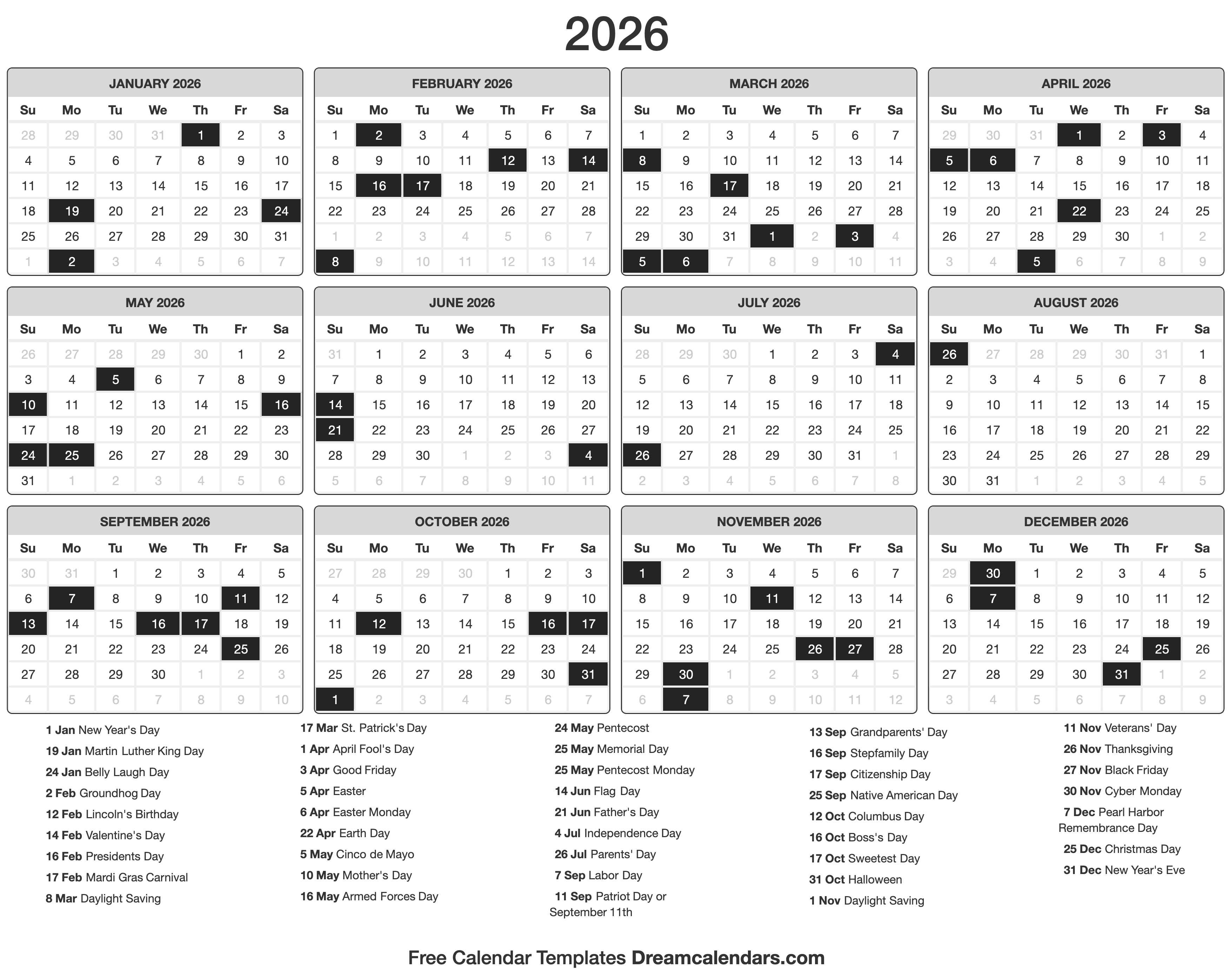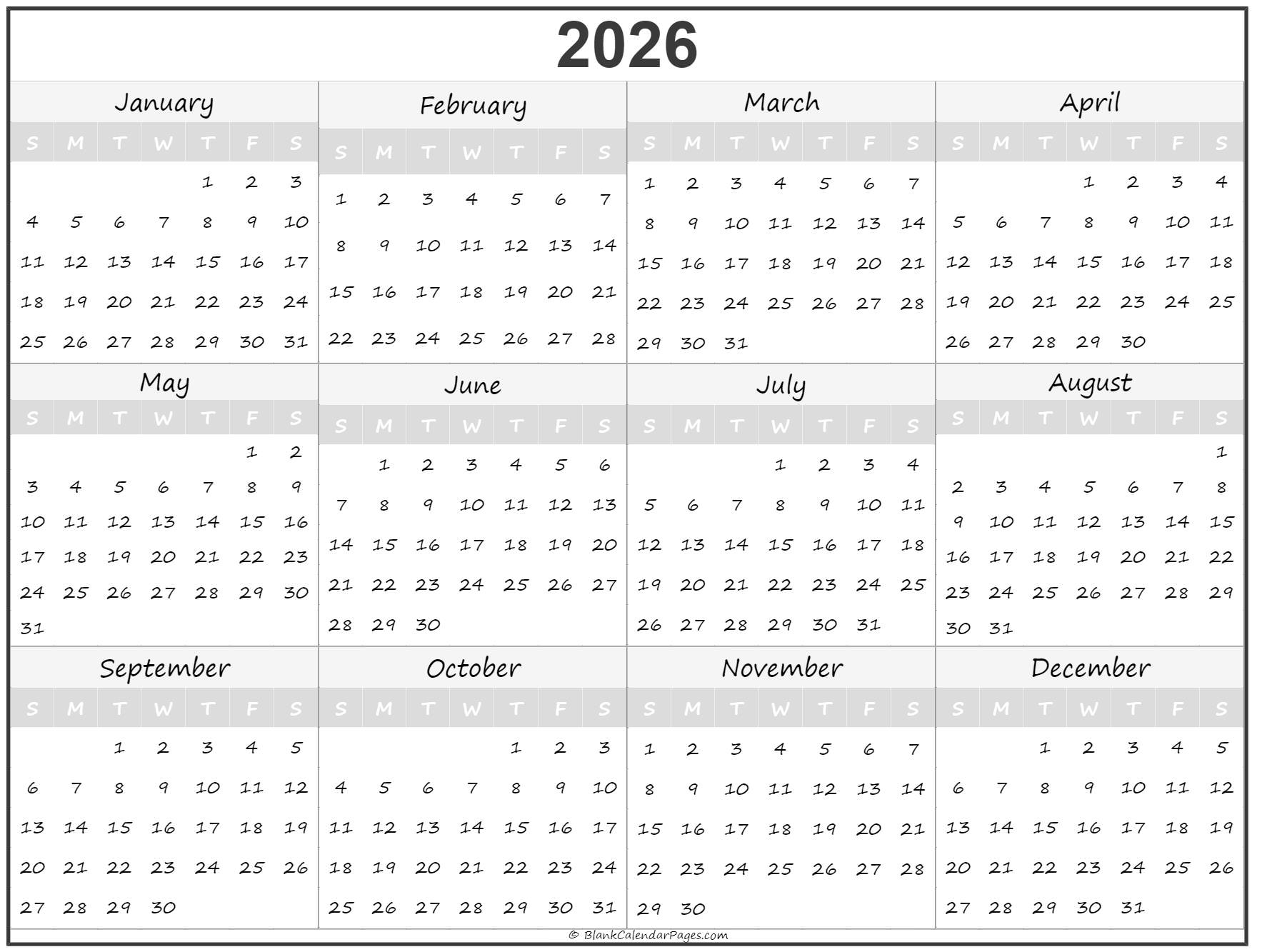.jpg)
Introduction
calendar for year 2026 time and date represents a significant subject within its field, encompassing a range of practices, traditions, or applications that shape daily life and broader cultural or professional landscapes. Understanding calendar for year 2026 time and date provides clarity about its background, its present relevance, and the way it continues to influence various aspects of society.
Definition and Origin of the 2026 Calendar
The concept of a calendar, fundamentally, is a system for organizing days for social, religious, commercial, or administrative purposes. It achieves this by giving names to periods of time, typically days, weeks, months, and years. The calendar used predominantly across the globe today, and thus for the year 2026, is the Gregorian calendar. This solar calendar was introduced by Pope Gregory XIII in October 1582 as a refinement of the Julian calendar. Its primary innovation was a more accurate rule for calculating leap years, ensuring a closer alignment with the Earth’s orbital period around the sun.
For 2026, this means a standard year of 365 days, divided into 12 months, with no leap day (February 29th). The Gregorian system structures time into predictable cycles, allowing for universal coordination. Each day is defined by its date (day of the month, month, year) and its position within the week. Time, within this calendrical framework, is further broken down into hours, minutes, and seconds, governed by coordinated universal time (UTC) and various time zones. The origin of this system lies in millennia of astronomical observation and mathematical development, culminating in a robust framework that underpins modern global society. The specific arrangement of days and dates for 2026 is a direct continuation of this historical lineage, offering a consistent and predictable structure for the year ahead.
Importance of the 2026 Calendar Today
The importance of the 2026 calendar extends far beyond simple date-keeping; it is a fundamental tool for societal organization and individual productivity. In an increasingly interconnected world, a standardized calendar system is crucial for global coordination. Businesses operate across different time zones, requiring precise scheduling for meetings, project deadlines, and supply chain management. International travel and communication rely heavily on a common understanding of dates and times to prevent confusion and ensure efficiency.
For individuals, the 2026 calendar serves as the bedrock for personal planning, from scheduling appointments and holidays to managing educational commitments and family events. Governments utilize the calendar for legislative sessions, election cycles, and public service delivery. Educational institutions structure academic years, examination periods, and holidays around its framework. The legal system depends on fixed dates for contracts, court proceedings, and statutory deadlines. Moreover, cultural and religious observances, many of which are fixed or calculated relative to the Gregorian calendar, continue to shape community life. Without this universally accepted framework, the intricate web of modern society would quickly unravel, leading to chaos in commerce, governance, and daily life. The 2026 calendar thus provides the essential temporal scaffolding upon which all organized human activity is built.
Benefits of the 2026 Calendar
The benefits derived from a standardized calendar system, such as the one governing 2026, are extensive and pervasive. Firstly, it provides unparalleled predictability and consistency. Knowing the exact sequence of days, weeks, and months allows for long-term planning, whether for personal milestones, corporate strategies, or national budgets. This consistency minimizes ambiguity and facilitates seamless coordination across diverse groups and geographical locations.
Secondly, it enables efficient resource allocation and scheduling. Businesses can plan production cycles, marketing campaigns, and employee shifts with precision. Educational institutions can structure curricula and academic terms effectively. Public services, such as transportation and healthcare, can optimize their operations based on predictable temporal patterns. This efficiency translates into economic advantages and improved service delivery.
Thirdly, the calendar supports accurate record-keeping and historical documentation. Every event, transaction, and achievement can be precisely dated, creating an invaluable archive for historical analysis, legal validation, and accountability. This capacity for precise temporal referencing is critical for scientific research, legal frameworks, and financial auditing.
Finally, a common calendar fosters social cohesion and cultural understanding. Shared holidays, festivals, and commemorative dates provide opportunities for collective celebration and reflection, strengthening community bonds. Even in a secular context, the rhythm of the year, marked by seasons and annual events, provides a shared temporal experience that unites people. The structure of the 2026 calendar, therefore, is not merely a technical tool but a foundational element supporting human organization, progress, and shared experience.
Applications of the 2026 Calendar
The applications of the 2026 calendar permeate virtually every aspect of modern existence, demonstrating its indispensable role. In personal life, individuals use it for daily scheduling, managing appointments, planning vacations, remembering birthdays and anniversaries, and setting personal goals. Digital calendars on smartphones and computers have become ubiquitous tools for organizing individual schedules, often synchronized across multiple devices.
In the business sector, the annual calendar is fundamental for financial planning, setting fiscal years, managing project timelines, scheduling product launches, and coordinating international operations. Sales cycles, marketing campaigns, and employee performance reviews are all structured around the yearly progression. Logistics and supply chain management rely heavily on precise dates and delivery windows.
Education systems utilize the calendar to define academic years, semester breaks, examination periods, and extracurricular activities. Students and faculty depend on this structure for planning coursework and research. Government and public services employ the calendar for legislative sessions, election schedules, tax deadlines, public holidays, and the deployment of emergency services. Legal systems operate with strict adherence to dates for filings, hearings, and appeals.
In media and entertainment, production schedules for films, television shows, and music releases are meticulously planned according to the calendar. Sports leagues organize seasons, tournaments, and events. Even in scientific research, experiments, data collection, and publication timelines are intrinsically linked to specific dates. The 2026 calendar, therefore, serves as a universal framework, enabling coordinated action and progress across diverse human endeavors.
Challenges and Future of the 2026 Calendar
While the Gregorian calendar provides a robust framework, certain challenges persist, and its future integration with emerging technologies presents new considerations. One significant challenge lies in time zone management and daylight saving variations. Coordinating global activities requires constant awareness of these differences, which can lead to errors and inefficiencies, particularly in international business and travel. The ongoing debate and varied implementation of daylight saving time across different regions further complicate universal scheduling.
Another challenge involves the cultural and religious diversity of calendrical systems. While the Gregorian calendar is dominant, many cultures and religions observe their own calendars, leading to a need for conversion and dual scheduling in multicultural contexts. This can create complexities in public holidays, educational planning, and inter-cultural communication.
Looking to the future, the calendar will increasingly integrate with advanced digital technologies and artificial intelligence. Smart calendars that automatically suggest optimal meeting times across time zones, predict scheduling conflicts, and integrate with other personal and professional applications are becoming more sophisticated. The development of personalized scheduling algorithms that learn individual preferences and optimize time usage represents a significant future trend. Furthermore, as global connectivity deepens, there may be ongoing discussions about further standardization or more intelligent, adaptive systems that can seamlessly bridge different temporal frameworks. The fundamental structure of the 2026 calendar is unlikely to change, but its digital interfaces and intelligent applications will continue to evolve, making time management more intuitive and globally synchronized.
FAQs about the 2026 Calendar
Q1: What is the 2026 calendar?
A1: The 2026 calendar refers to the Gregorian calendar for the year 2026, which is a standard solar calendar with 365 days, divided into 12 months, and is not a leap year. It provides a universal system for organizing days, weeks, and months.
Q2: Why is the 2026 calendar important?
A2: The 2026 calendar is crucial for global coordination, personal planning, business operations, governmental functions, and educational scheduling. It provides a standardized framework that enables predictability, efficiency, and synchronized activities across all sectors of society.
Q3: What are the main benefits of the 2026 calendar?
A3: Key benefits include predictability and consistency for long-term planning, efficient resource allocation and scheduling, accurate record-keeping for historical and legal purposes, and fostering social cohesion through shared temporal experiences and observances.
Q4: How can the 2026 calendar be applied in daily life?
A4: In daily life, the 2026 calendar is used for scheduling appointments, planning vacations, managing work deadlines, coordinating educational activities, observing holidays, and organizing personal and family events. Digital calendar applications are common tools for these purposes.
Q5: What challenges are associated with the 2026 calendar?
A5: Challenges include managing time zone differences and variations in daylight saving time across regions, and accommodating diverse cultural and religious calendrical systems. Future considerations involve integrating with advanced digital technologies and AI for enhanced scheduling.
Tips for Using the 2026 Calendar Effectively
Understand the fundamentals.
Grasping the basic structure of the 2026 calendar, including its 365 days, 12 months, and the sequence of weekdays, is essential. Familiarity with national and regional holidays, as well as significant cultural dates, allows for better personal and professional planning. Knowing which days are weekends and which are weekdays forms the foundation for all scheduling.
Focus on practical use.
Translate calendar knowledge into actionable planning. Utilize digital or physical planners to map out commitments, deadlines, and important events for 2026. Break down larger projects into smaller, manageable tasks with specific dates. Regularly review the upcoming weeks and months to anticipate needs and avoid last-minute rushes. This proactive approach maximizes productivity and minimizes stress.
Stay updated on new trends or research.
While the Gregorian calendar’s structure remains constant, the tools and methods for managing time are continually evolving. Keep abreast of new calendar applications, scheduling software, or productivity methodologies that can enhance efficiency. For instance, exploring features like automated reminders, shared calendars, or integration with project management tools can significantly improve organization for 2026.
Avoid common mistakes.
Common errors include over-scheduling, underestimating task durations, and failing to account for travel time or unexpected delays. It is prudent to build buffer time into schedules. Also, ensure all important dates are entered accurately and consistently across all planning tools to prevent missed appointments or deadlines. Regularly backing up digital calendar data is also a wise practice.
Adopt a long-term approach.
While daily and weekly planning is crucial, also consider the entire span of 2026. Identify key annual milestones, such as major projects, vacations, or recurring events, at the beginning of the year. This long-term perspective helps in allocating resources effectively, balancing workloads, and ensuring that significant objectives are not overlooked amidst daily demands.
Conclusion about the 2026 Calendar
The continuing importance of the 2026 calendar cannot be overstated. It reinforces its cultural, professional, and personal significance. As a universal framework for timekeeping, it underpins global coordination, facilitates efficient planning across diverse sectors, and provides the essential structure for individual and collective progress. Its benefits, ranging from predictability and consistency to accurate record-keeping and social cohesion, are foundational to modern society. While challenges related to time zone management and the integration of various cultural calendars persist, the ongoing evolution of digital tools and intelligent scheduling systems promises to enhance its utility. The benefits of a standardized annual schedule far outweigh these complexities, ensuring that the 2026 calendar remains a central element of progress and relevance into the future, guiding human endeavors with precision and clarity.







Leave a Reply